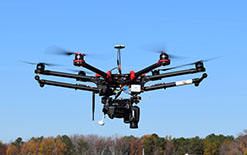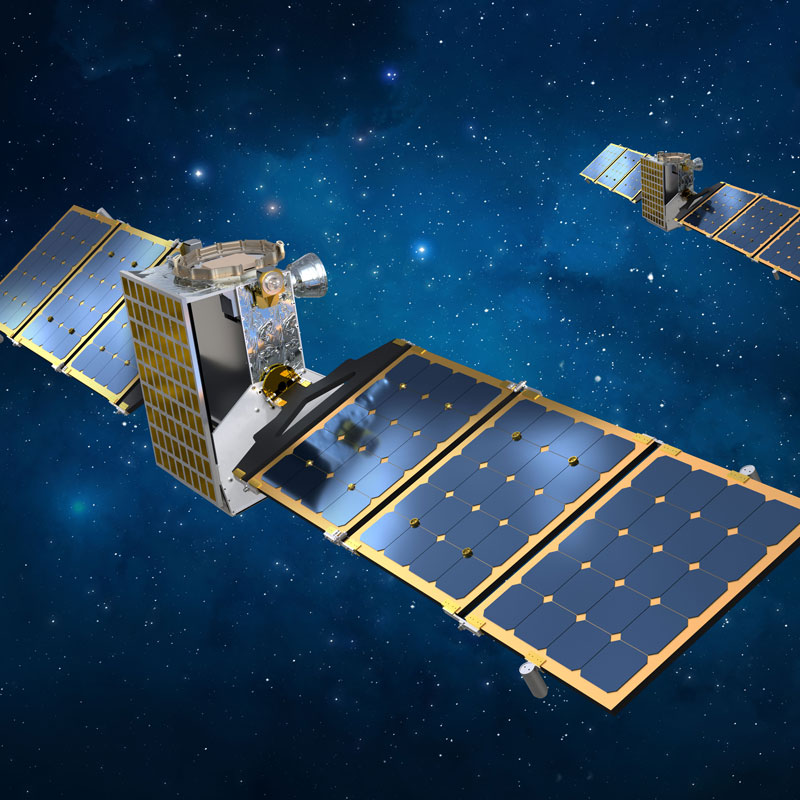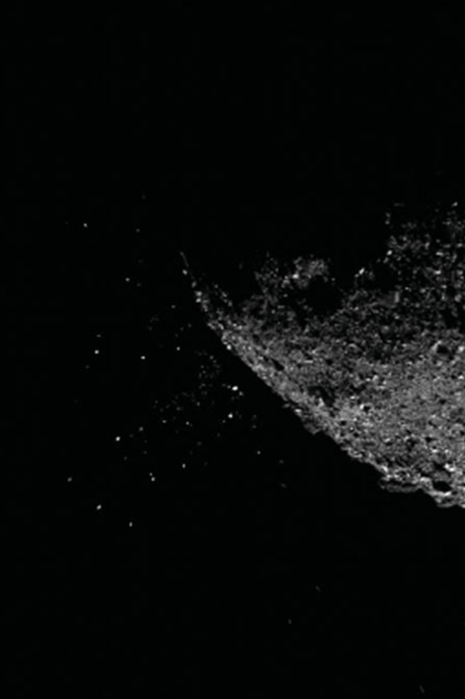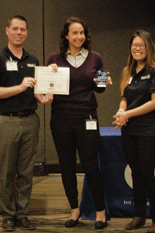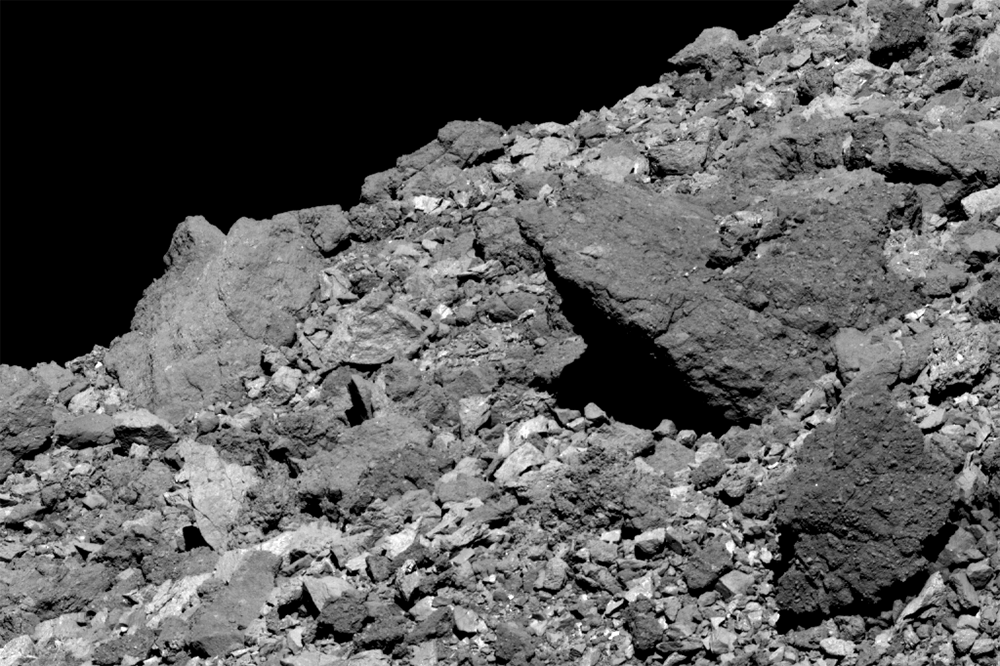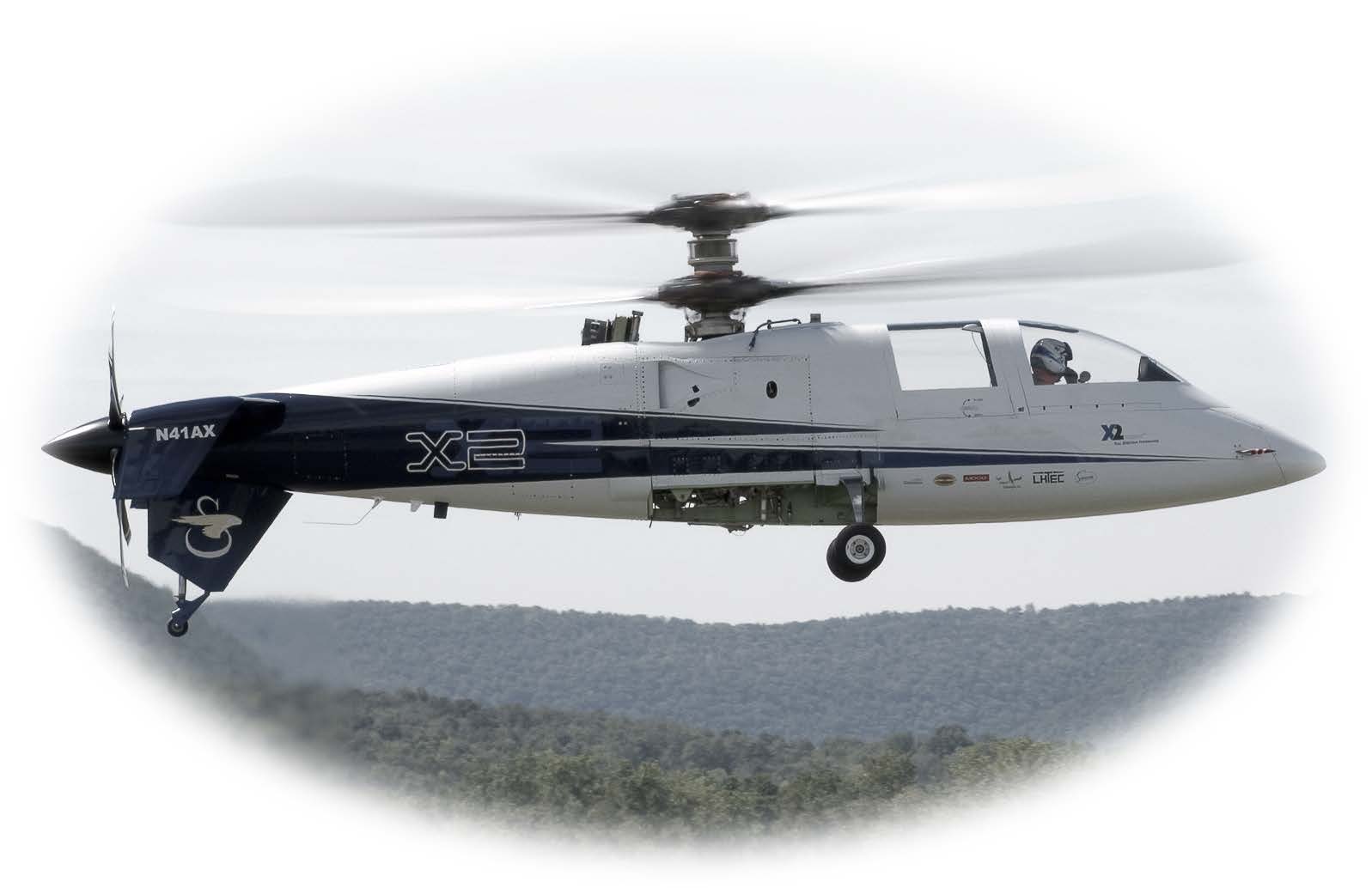News Story
Elon Musk Tweets Back
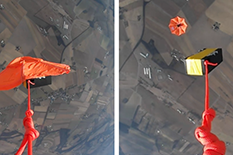
After Elon Musk tweeted that “SpaceX will try to bring rocket upper stage back from orbital velocity using a giant party balloon,” Quinn Kupec, an undergraduate researcher in the University of Maryland’s Department of Aerospace Engineering tweeted back the following: “If you're proposing what I think you are, an ultra low ballistic entry coefficient decelerator, then you and @SpaceX should come see what we have at the @UofMaryland. We’ve been working on this for awhile and just finished some testing.”
Quinn never expected a reply, but Musk soon tweeted this back: “Yeah, exactly! Would be great to hear your thoughts. We’re going to try a few approaches. Can def be done, just about minimizing mass.”
The following is question and answer session that covers Quinn’s research on a deployable heat shields (or ParaShields), which can accommodate high aspect ratio payloads, provide more drag, and reduce heating around a spacecraft. Quinn also discusses future work and his conversation with the SpaceX staff.
Q: So what is it like to be an undergraduate researcher in UMD’s department of aerospace engineering?
A: It’s pretty awesome. We do design reviews before we fly, so once we have a solid design and decide this is what we’re going to do, we have to present in front of the rest of the lab. We do get oversight, which is nice, but for the most part it’s very self-led.
There are a lot of resources too. We’re funded by the Maryland Space Grant Consortium, very generously. They help fund the balloon program. The most valuable thing [about being an undergraduate researcher] is definitely the experience. You get to put it on your resume and say, look, I did a real thing. I’m not just in class learning the theoreticals, I get to go out, design components, test them, build them, fly them. I can put on my resume multiple programs that have gone all the way from design to flight testing. It’s super awesome. It’s probably why I got my internship [at Sierra Nevada Corporation] last summer and probably why I got my internship [at Aurora Flight Sciences, a Boeing Company] this summer.
Q: Can you describe your research as it relates to your topic, Testing Aerodynamic Stability of Parashield Reentry Vehicles in Low Mach Number Flight?
A: First, a little background. Deployable heat shields are super useful. You can do a whole lot with them. They’re really nice in the upper atmosphere because they slow down a spacecraft, so there’s less heating, which is a good thing. There’s a whole bunch of technical benefits. Once [a space craft] gets low in the atmosphere, if you have a center of gravity off-set behind your center of drag, it becomes unstable or semi-unstable, which isn’t great. In general, you want to keep flying with your heat shield pointed down because that’s the condition you know and that’s how you’ve built it to survive. If it’s unstable, you could potentially go inverted with your heat shield up. And now you’re in a whole different range of conditions, if you still want to deploy a parachute then it could tangle and or you could destroy part of your structure because you didn’t design it for this. All in all, not a good thing. Basically, they’ve done the math, they know what happens when you hit the upper atmosphere at really high speeds. It’s fairly well understood but it’s also really expensive to test. It requires rockets or high mach number wind tunnel time, which is really expensive.
So our project is fairly easy to test and tests something that still isn’t super well-defined. We send [the deployable heat shield] up on a balloon and we have our center of gravity offset behind our center of drag, just by nature of how the craft is designed, and then we see how stable it is.
Q: Who would benefit from a deployable heat shield? That is to say, who should care about your project?
A: Anybody doing space exploration should definitely care because it’s super useful. Dr. Akin has a paper about the application of these things and why they’re so great. So upper stages of rockets, for example, could be recovered, theoretically. Crew rotations from the international space station would be more efficient. Right now, when you recover your crew or your cargo, you bring them back in a very traditional looking space capsule; it’s looked the same since space capsules were invented: a sphere on the bottom and a tapering cone towards the top. But cones are really a terrible shape to put people in; it doesn’t make a whole lot of sense. You lose all this space at the top and have your people crammed in at the bottom.
Cylinders, on the other hand, are a lot better. You can have a lot more space in a cylinder because it’s not tapering away. But the problem with cylinders for a conventional entry vehicle is aerodynamic impingement. Basically, when the air flows around the heat shield, it moves outward and then back in towards your spacecraft. Spacecrafts are cone-shaped so that when the air comes back in, it’s past the edge of the craft. If air hits the craft when it moves back in, it creates a lot of heat. Heating is the biggest problem for a craft entering the atmosphere. So then you need a thermal protection systems and those are really heavy, and heavy things are bad for a spacecraft. But if you have a really big heat shield at the bottom, the air closes farther back and your cylinder is fine: it’s well within the protected area. This makes it a lot more effective to use when bringing things back from space. If you want to bring crew members back, you can fit a lot more crew; if you want to bring stuff back, you can fit a lot more stuff.”
Q: What drew you to this topic?
A: I’ve always loved space. As a freshman in aerospace, you take a course called The Aerospace Engineering Profession [ENAE100] and part of that class is a freshman project and you get put in groups with professors. I got paired up with Dr. Bowden and the Nearspace Balloon Program. The cool thing that Dr. Bowden does with the freshman is she lets them decide what they want to do for their projects. The day before pitching our ideas, I had seen a video of NASA testing a Low Density Supersonic Decelerator. It was essentially a ring that you put on a spacecraft. It was being tested for Orion space capsules, in order to slow it down and use less parachutes. And I thought, what if we did something like that? I knew they had been testing them on balloons. Dr. Bowden said maybe it’s a little complicated for a first-semester freshman, but if I keep coming back, they’ll let me do this. So I came back and now they can’t get rid of me.
Q: What faculty members have you worked with on this topic?
A: Dr. Mary Bowden and Dr. David Akin, and, of course, the whole aerospace department is always super supportive.
Q: Can you provide a summary of the overall concept? There is TARDIS-1 and TARDIS-2 and then SHIELD, right?
A: TARDIS-1 (Triggered Aerodynamic Resistance and Drag by Increase in Surface) started off as that pitch for our freshman project [in ENAE100], and I started working on it right away, even during that first semester in my spare time. At that point, it was all just concepts on my computer. Since I’d seen [NASA] doing testing with Orion, I thought, let’s try to build it into a spacecraft that already exists. So that’s why [TARDIS-1] was spherical in shape because Orion had a spherical heat shield.
We ran a proof of concept test, deploying the heat shield from the balloon, and everything functioned as it should. After more leg work and research, we realized that the spherical section may not be such a great idea because it doesn’t provide a lot of drag to slow down the descent. The whole point of these deployable heat shields is to change your ballistic coefficient. So if you increase your area and increase your coefficient of drag, your ballistic coefficient goes down, which is good. So if we’re looking to have a larger area and a higher coefficient of drag, spheres are not so great because at a certain point the sphere begins to curve back around and its diameter is reducing. So you can either use a really, really big sphere, or you can use what’s called a blended sphere cone. Most of the Mars entry vehicles’ heat shields are blended sphere cones because the atmosphere is thinner, so you want a larger, flatter heat shield. So we tried that for TARDIS-2.
Last year, we took part in this competition called CanSat, a glider competition. UMD’s team didn’t place top forty, which meant we didn’t get invited to the actual competition. I didn’t work on it, but it was another group in the same lab. After that we decided not to compete again this year. But then, someone texted me to read this year’s competition rules, so I went on their website and started reading them. This year’s competition will focus on a planetary entry vehicle and needs to deploy an aerodynamic decelerator as soon as it exits the rocket, and so on. I realized, oh my gosh, it’s a deployable heat shields competition. We would literally be competing with what we’re already doing. So we quickly put together a team, which was primarily people working on TARDIS, and now we’re working on that. There were some changes we had to make for the competition and that’s how we got to SHIELD, or the Simulated Heat Inhibiting Entry and Landing Device.
Q: How did the testing go?
A: We’ve gotten some pretty good stability data. The first test we did, we weren’t really looking for data. We just wanted to see if we could deploy a heatshield on a balloon. Can we drop from the balloon properly? And can our electronics gather any useful data? And the answer to all those questions was yes, which was really good.
TARDIS-2 out-performed expectations and we’re still trying to get to the bottom of that. Basically, we figured, it should be fine provided it remains relatively close to its vertical, heat-shield-down orientation. We knew it would be semi-stable, but if it pitches past 90 degrees, which is completely sideways, that would be really bad, and we don’t want that. It might pitch 30 degrees from vertical and that would be fine, it should correct itself, which is what we were hoping for.
When we launched the balloon, TARDIS turned sharply sideways. At that point, we didn’t know if it would work, but at least the parachute would still deploy if anything went wrong because we have a failsafe code built in. So we dropped it at about 7,000 feet and we can’t see it; we know that it’s dropping but we don’t know what kind of orientation it’s in. So we get in our van and go out to find it, and it seemed to have landed right-side down. We pull up the data and it looked like it had been right-side up, which was pretty bizarre given how it was hanging from the balloon. Luckily, we had mounted a camera right above it. On the video, not only does it right itself, it actually pitched to 120 degrees from vertical, almost upside down, and then came back.
We still can’t figure out why it did that; the math says it shouldn’t. Our two leading theories are: One, there was some sort of weird anomaly when it got released from the balloon, that somehow transitioning from going up to going down caused weird behavior. The theory I like a little more is that for a blended sphere-cone, the math is different. A lot of analysis gets done for spherical sections because that’s what has been used before. So maybe we're in new territory here.
We’re hoping to [eventually] test this some more and drop TARDIS sideways and see what happens. We’re still trying to figure it out, but we conclusively proved that deployable heatshields can be stable in flight and maybe even more stable than we would think. We haven’t done any testing with [SHIELD] yet. Our first major test is next week when we do a major balloon flight test. Eventually, we will be test-flying it on a small, suborbital rocket at 700 meters, even lower than our balloon testing has been, but that’s what the CanSat competition is.
Q: I understand you are currently working to finish the development of the SHIELD system. Can you describe that system?
A: One of CanSat’s requirements is that [the deployable heat shield] can’t descend too slowly. It can’t descend any slower than 10 meters per second while its heatshield is open. So we actually designed our heat shield a little too well, because it was descending at 6 meters per second with a 70 degree half-angle sphere-cone. So we decided to go to 60 degrees because it’s less drag and once we went up to 60 degrees we were descending at exactly 10.1 meters per second. So there’s a few design changes in the heat shield itself but otherwise not a whole lot [is different from TARDIS to SHIELD]. We went to six reinforcement spars instead of eight since there’s a really strict weight requirement on CanSat and we didn’t think the aerodynamics would be enough to warrant eight spars anyway. We also changed deployment mechanisms. Originally, we used a linear actuator and then torsion springs, but we decided to do the best of both worlds: we’ll use the lightness of using a spring, but not have a rotating lock complexity. So we put in a really powerful linear spring that has something like 20 pounds of force. It has way more force than we need, but that way it holds the shield open so that way there’s no lock; it just has to push against this really strong linear spring. And that’s what we're trying to do right now.
Q: Can you discuss your future work with the SHIELD system and developing a new version of TARDIS?
A: We’ll probably take the best parts of SHIELD that work and go back to a 70 degree half-angle, because 70 degrees [has worked better] in my opinion, and that will be TARDIS-3. We’re hoping to test TARDIS-3 from at least 30,000 feet, maybe 70,000 to 80,000 feet. The higher you go, the atmosphere gets less dense. So then we can have stability characteristics in low density flight, which would be really nice because, A, if you’re entering earth’s atmosphere, that’s something you would go through; and, B, at the upper atmosphere it starts to become like the low Martian atmosphere, so we could maybe make some assumptions about how something like this would perform on Mars. Our limit of communication with the balloon is currently around 30,000 feet, where we can command it. But beyond 30K, with our current system, it’s really hard to tell it to drop something, which is a safety feature we need. So if they fix that, and they’ve got something in the works using satellites, hopefully we’ll be able to drop it from 80K. And then maybe we’ll be able to put it on a rocket, which is the dream. It’s likely that [TARDIS-3] will to be ready to fly next spring.
Q: What inspired your tweet to Elon Musk? Do you understand what he is envisioning?
A: I’d just come back from the [American Institute of Aeronautics and Astronautics] Region 1 Student Paper Conference in Potsdam, New York, where I presented about this. And I was on Twitter when I saw his tweet and thought, wait a minute: By a “balloon” he means an inflatable, and by “inflatable” he means an inflatable heatshield. A lot of groups who do work with deployable heat shields, like NASA, use an inflatable structure. For us, it’s just not practical. Ironically, having inflatable structures on balloons is really hard. Also, the math and risk analysis that Dr. Akin has done suggest that mechanical is better anyway; you don’t save a lot of mass having an inflatable heatshield compared to mechanically actuated one, but you do have a high risk of it popping.
I thought that if [Musk] was actually talking about an inflatable heat shield, that’s pretty similar to what we do. So I tweeted at him for fun and said, 'If you're proposing what I think you are, an ultra-low ballistic entry coefficient decelerator, then you and SpaceX should come see what we have at the University of Maryland.'
So over the next day, I was getting a lot of likes on my tweet and I wondered if I could get enough likes that he might actually see it. So I got a lot of friends to like my tweet. It had been close to twenty-four hours since I’d tweeted it and I thought he wasn't going to tweet back. But then I got a [message] from my friend with a screenshot of Elon’s response. I was just so shocked and excited. Especially because he wants to hear my ideas. I couldn’t believe Elon Musk wanted to talk to me!
Q: Do you think some of the SpaceX staff would be interested in a partnership?
A: We set up a meeting with SpaceX [and their VP of Vehicle Engineering] and I brought in the SHIELD team and Dr. Akin and we talked for close to an hour about what we’re doing and what they’re doing. Toward the end, Mark Juncosa said it was really cool and said depending on where they decide to go with this, maybe they can partner with us and develop some stuff. So we'll see!
Q: How far along is this research, is it still conceptual or fundamental, or is it very close to being ready to be applied and rolled out?
A: [The inflatable heat shield] is possible now. It’s going to be a pain to implement because there’s a lot of engineering constraints with trying to attach a heat shield to an upper stage, the center of mass being a big one. There’s also been speculation that he was actually talking about a ‘ballute,’ which is a balloon-parachute. It’s sort of like an inflatable heat shield; it does the same thing: it drops your ballistic entry coefficient but it trails behind the payload as an inflatable balloon. But Dr. Akin and I were encouraging them to stick with heat shields; there’s much more work that’s been done on them. Ballutes can pop or your engine can still get scorched.
This is very much what SpaceX does; they try crazy things. A few years ago, if someone had said this was going to be a thing, I would have said, 'Yeah, okay, whatever.' But then again, several years before that, if someone had said they’re going to land the first stage of an orbital class rocket booster on a drone ship in the middle of the Atlantic Ocean, that would have also been total insanity. And yet, here they are doing that. You look at where we were in the early 1900s. By the end of the sixties, we had a man on the moon. Within fifty years or so we went from people not being able to fly to landing on another body. Aerospace is this really cool thing where stuff just happens superfast.
I think this is something where the technology is there, and it works—and we just need to figure out how to implement it. I think that if this is something [SpaceX] wants to do, we could see it within the next two to three years.
Published May 6, 2018
